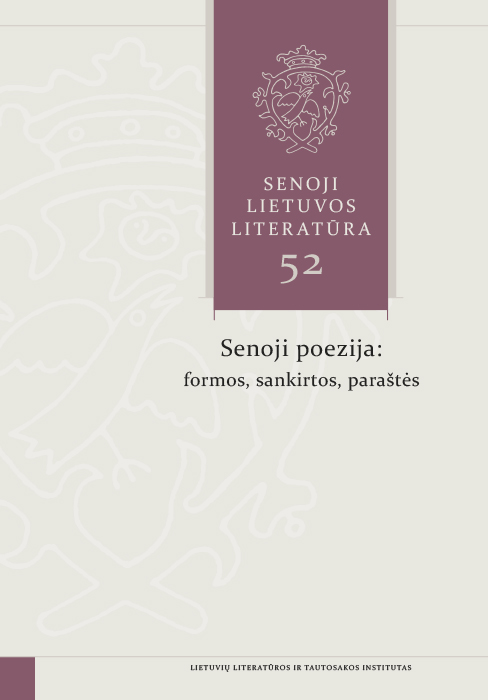Sława nieśmiertelna polskiej i Wielkiego Księstwa Litewskiego Heroiny: A Poem Dedicated to the Wedding of Teresa Radziwiłł née Sapieha
Abstract
The occasional work (publication) Sława nieśmiertelna polskiej i Wielkiego Księstwa Litewskiego Heroiny (Immortal Fame of the Heroine of Poland and the Grand Duchy of Lithuania), dedicated to the wedding of Teresa Radziwiłł née Sapieha with Hieronim Florian Radziwiłł (1715-1760) in 1739, is written in accordance with the genre convention. The poem was published with a proofreading error: the Roman numerals indicate the date of publication as MDCCLX (1760) instead of MDCCXL (1740). It was written in the milieu of the Piarists of Lithuania. So far, the work has not been studied in depth.
The publication consists of several parts: an engraving of the coat of arms, a poem describing the coat of arms, a poetic dedication, and a genealogical-heraldic panegyric in prose. In order to highlight the uniqueness of the addressee, the author not only mentions the famous members of her family, but also the merits of famous personalities from olden times. He compares the achievements of individual ancestors with merits of mythological or, in his opinion, exceptional historical figures. Placing emphasis on the greatness of the family, the author of the work refers to the legend of the Roman origin of the Sapieha, which is popular in the occasional literature of the Grand Duchy of Lithuania. The Sapieha was one of the three most influential noble families of the Grand Duchy of Lithuania, and Teresa Radziwiłł née Sapieha was their heir. On the other hand, the representation of the addressee of the poem does not differ from the universal ideals depicted in the literature of the time. The author extols such qualities as piety, generosity, and modesty.
The publication, which is clearly of panegyric and propagandistic nature, aimed not only to glorify the addressee but also to stress the greatness, rank, and social status of her family.

This work is licensed under a Creative Commons Attribution 4.0 International License.
Most read articles by the same author(s)
- Regina Jakubėnas, Fr. Remigiusz Kossakowski’s Reports about His Efforts to Achieve Election of Fr. Marcin Poczobut-Odlanicki as a Member of the French Royal Academy of Sciences (Based on His Correspondence with Poczobut) , Senoji Lietuvos literatūra: Vol. 51 (2021): Senoji Lietuvos literatūra
- Regina Jakubėnas, Foreword , Senoji Lietuvos literatūra: Vol. 51 (2021): Senoji Lietuvos literatūra
